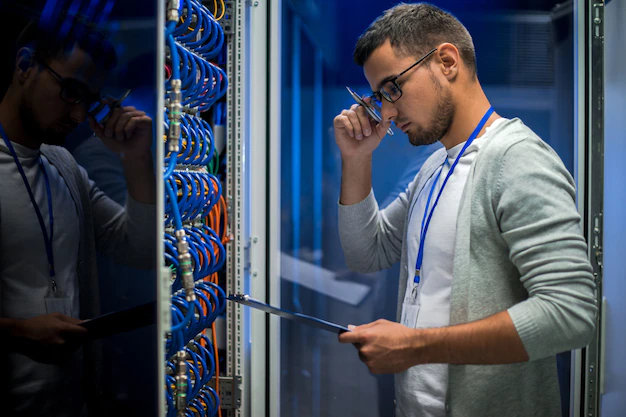
Everything you need to know about data center power
Data center power is one of the most important aspects of keeping a data center up and running.
Without adequate power, a data center can grind to a halt very quickly.
There are many different factors to consider when planning data center power, from the type of power source to the capacity and redundancy needs.
In this article, we’ll cover the entire system of data center power so you can know everything you need to.
In the article:
- The power source
- Data centre power design
- Other data centre power best practises
- Power in data centers
The power source
The first thing to consider when planning data center power is the power source.
There are two types of power sources that are most common in today’s data centers:
AC power
AC power is a voltage generating current which uses alternating electricity. Current in an AC generally operates at 12 – 24 volts. It is considered “traditionalist” electricity and is used in most data centers worldwide. It’s a reliable and stable source of power and is easily changed from voltage to voltage.
DC power
DC power is used less commonly. Contrary to AC, this remains constant & does not change directions. This type is typically associated with battery energy stored in a UPS battery but mot the powering of ancy data center components..
Where is power supplied from?
Most data center systems will use municipal electric grids as main sources of power. The electric grid will provide energy and then transform the electricity onsite to get the best possible voltage and current for the needs of a central data center.
Some data centers look at other sources of electricity as a substitute for the electric grid. Data centers usually carry their own generators to provide emergency support. Some generator systems require a data center power supply. The electricity has not already been supplied.
Data center power design
Power capacity
Once you’ve chosen a type of power source, you need to determine the power capacity needed for your data center. This refers to how much power is the maximum that can be delivered to a data center at any given time. It’s important to have a high enough power capacity to meet the needs of your data center, but you also need to make sure that the capacity isn’t too high or it will be unecessarily expensive.
Power usage effectiveness
Then you need to consider the power usage effectiveness or power usage efficiency (PUE) . This is a metric used to measure the efficiency of a data center. PUE is calculated by dividing the total amount of power used by the data center by the amount of power used by the IT equipment.
A lower PUE indicates a more efficient data center. There are many things that can affect PUE, from the type of equipment to the way the data center is designed. There are also many ways to improve PUE, such as using energy-efficient equipment and optimizing airflow in the data center.
Improving PUE is critical for many data centers that are struggling to keep up with increasing power demands. By using strategies to optimize power usage, data centers can not only improve their PUE but also save money on their energy bills.
Power redundancy
Data center power redundancy is essential for ensuring that your data center stays up and running. If something like a power outage occurs, it can cause serious damage to the equipment and result in data loss. That’s why it’s important to have a backup power source, also known as an uninterrupted power supply (UPS).
There are two types of power redundancy:
- N+1 redundancy: This type of redundancy means that you have one more power supply than you need. This provides a level of protection in case of a failure of one of the power supplies.
- N+2 redundancy: This type of redundancy means that you have two more power supplies than you need. This provides a higher level of protection in case of a failure of one of the power supplies.
Either type of redundancy is important for ensuring that your data center remains up and running in case of an outage. These provide energy from the utility power grid to your generators. By using a redundant power supply, you can rest assured knowing that your data center will be able to continue operations.
Other data center power best practises
Management software
Data center power monitoring and management software is essential for ensuring that your data center power design is efficient. By using software to monitor power usage, you can identify any areas where you could optimize power consumption and improve your PUE.
Software also allows you to track and manage your generator systems, making sure that they are always up and running when needed. This is important for ensuring that your data center has a continuous source of power in the event of an outage.
Sustainability
Sustainability is a critical consideration for data centers. Not only is it important to be environmentally friendly, but it’s also important to be economical. By using strategies to make your data center more sustainable, you can save money on your energy bills.
There are many ways to make your data center more sustainable. One of the simplest ways is to use energy-efficient equipment. You can also improve the efficiency of your data center by optimizing airflow.
Breaker coordination
Breakers are another essential part of data center power systems. They are used to protect the equipment in the data center from damage caused by electrical faults.
There are two types of breakers:
- Molded case breakers: These breakers are used to protect circuits from overloads and short circuits.
- Air circuit breakers: These breakers are used to protect equipment from damage caused by lightning strikes or other surges in power.
Scalability
A data center’s scalability is determined by its ability to handle increasing or decreasing amounts of data. A data center that is scalable can handle changes in demand without having to make any major changes to the infrastructure. This is important for businesses that are constantly growing and expanding.
There are many ways to make a data center more scalable. One of the simplest ways is to use modular data center equipment. This allows you to add or remove modules as needed, without having to make any major changes to the data center. You can also use cloud-based solutions to increase scalability. This allows you to add more resources as needed, without having to make any physical changes to the data center.
Power in data centers
Data centers are essential for businesses today. Not only do they allow you to store your data in a secure location, but they also provide a reliable source of power for your equipment. By using a data center, you can be sure that your business will always have access to the information it needs.
In order to ensure that your data center runs smoothly, it’s important to understand the different aspects of data center power. We’ve discussed some of the most important concepts, including power source, measures of power efficiency and breaker coordination. By understanding these concepts, you can make sure that your data center is safe and efficient.
For more information on data centers, head to our info hub where you can learn more about having an energy efficient, green data center, or learn how to set up your own data center.
